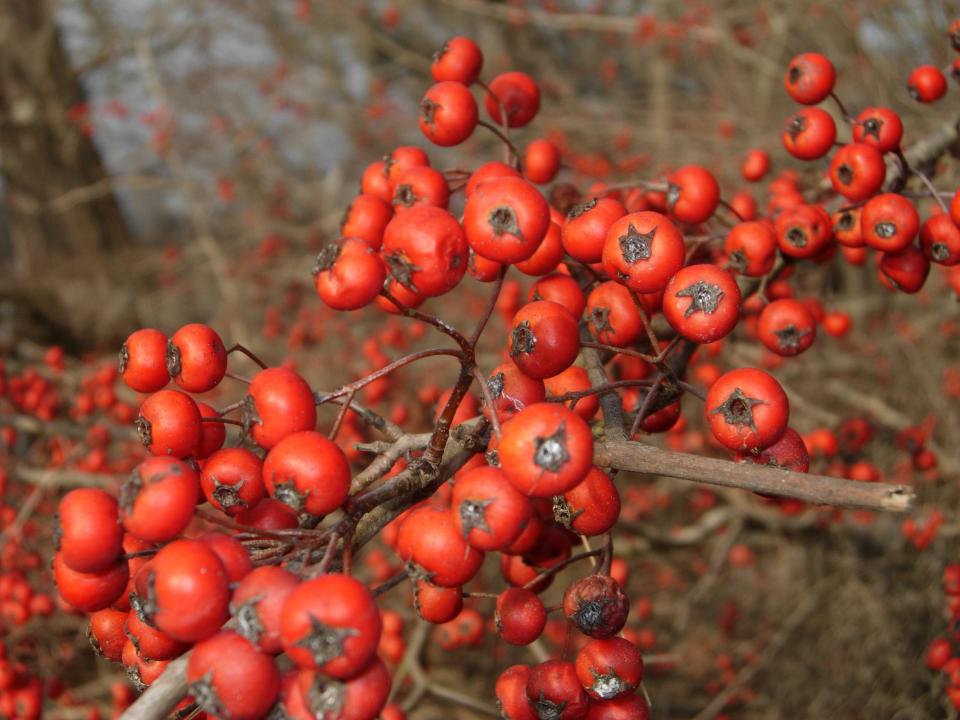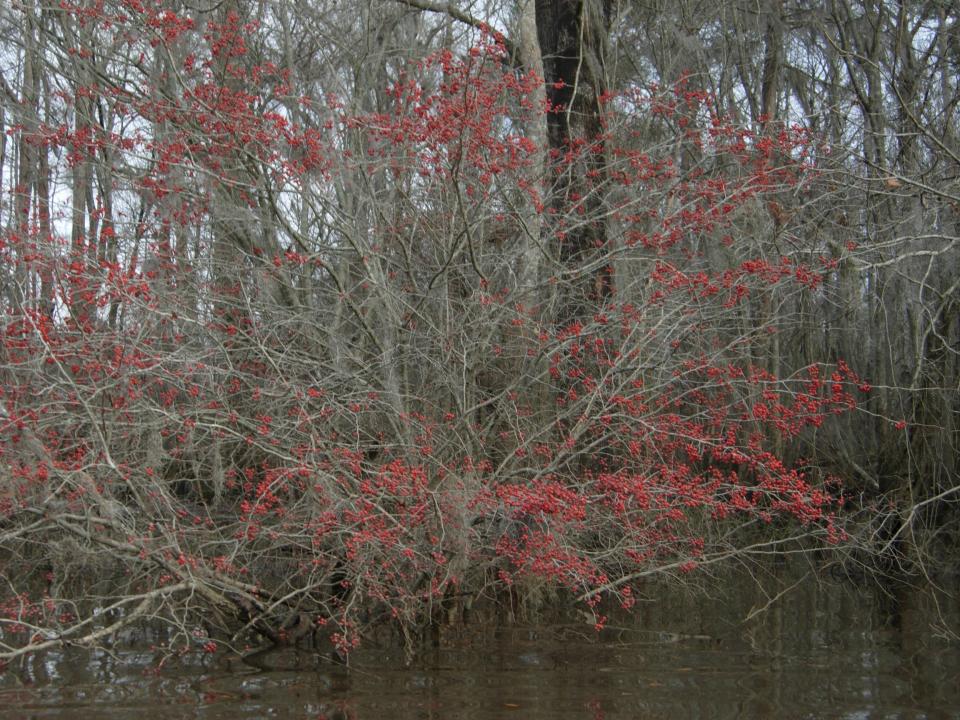Woody wetland shrub shows its brilliance seasonally | Mystery Plant
The other day I was getting a bit philosophical — or at least introspective, I suppose, thinking about how things change, especially people. Can it be that during our lifetimes, each of us goes through a number of identities as we age?
Well, sure. It’s got to be that way. Here’s how it works: once you get older, your friends and family recognize you not as the way you were as a toddler, or as a kid or teenager, but as a different person, or individual, as you change through these various stages, only with the same name.
Depending on the number of people with whom you’ve come in contact during your life, you’ve actually been lots and lots of different people. OK, well, enough of those deep thoughts.
But it does remind us that we humans have a single lifetime, and that we grow steadily older during it. Plants are a bit different in a way.

For instance, woody plants, that is, trees and shrubs, although they do have a finite lifetime — no plants are truly immortal — go through seasonal changes, and these changes appear as different “installments” of the same individual, over and over. Here's an example.
In the Southeast, this is a widespread, mostly wetland shrub, occurring from Maryland down to Texas, including much of Florida. It doesn’t show up too much in the Appalachians, though. It is a plant of riversides and creeks. It’s a member of the rose family, and is a subset of that family whose members are characterized by producing a fruit that we call a “pome.”

A pome is derived from a flower with a number of pistils and which has a floral receptacle, called a “hypanthium,” swelling and eventually enclosing all of the seeds. Yes, this is what you see in an apple or pear, or loquat, or quince, etc.
With these, the edible part is the sugary, water-filled tissue of the swollen hypanthium: the fruit is technically found only within the core. (Of course, you can eat the core along with the deliciously swollen hypanthium, but most people don’t do that.)
Our Mystery Plant (Greenhaw, Crataegus viridis) has quite a number of cousins, all producing pomes, and belonging to the same genus, and you’ve almost surely seen a few on your various outings. These species occupy a number of different habitats, and some get to be tree-sized.
Right now, this particular species is producing its brilliant pomes, which will be visible through the winter, until they fall or the critters eat them. The fruiting plants make quite a show on a dark, wintry day, and in cultivation would surely bring a pop of color to anyone’s hibernal garden.
But remember, the same individual which is featured in the image will look completely different in the spring.
Instead of flashy fruits, it will be covered with hundreds of brilliant white flowers, also a show-stopper. In this way, such woody plants, during their life spans, go through some really serious visual changes from season to season. We humans aren’t like that: just one “season” for us.
John Nelson is the retired curator of the Herbarium at the University of South Carolina, in the Department of Biological Sciences. As a public service, the Herbarium offers free plant identifications. For more information, visit herbarium.org or email johnbnelson@sc.rr.com.
This article originally appeared on Tallahassee Democrat: A wetland shrub, greenhaw puts on a brilliant show in fall

